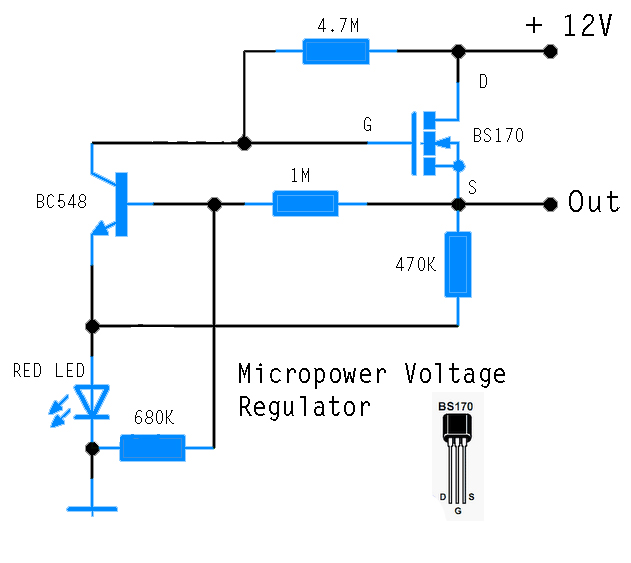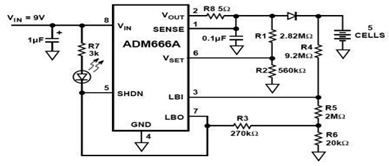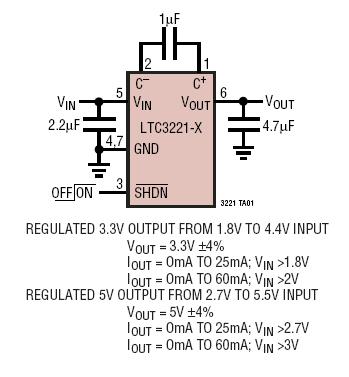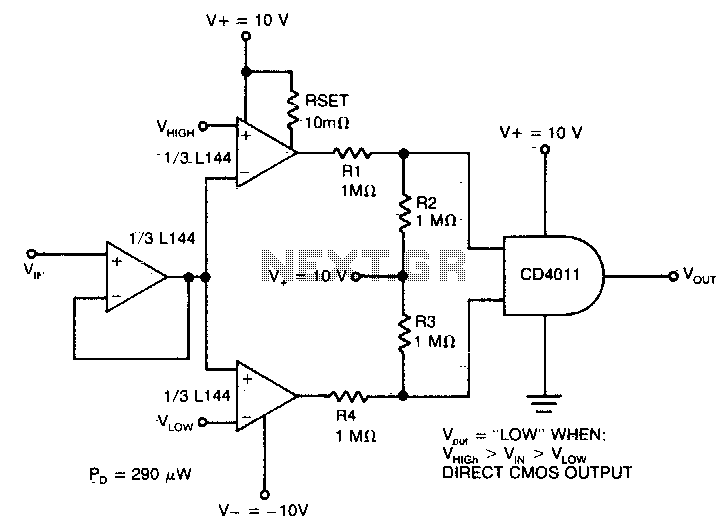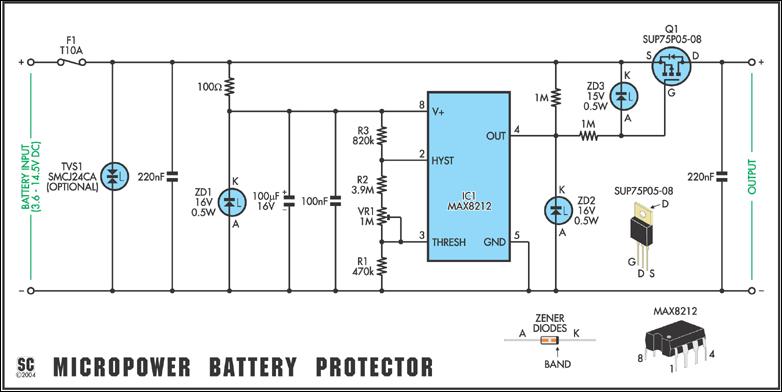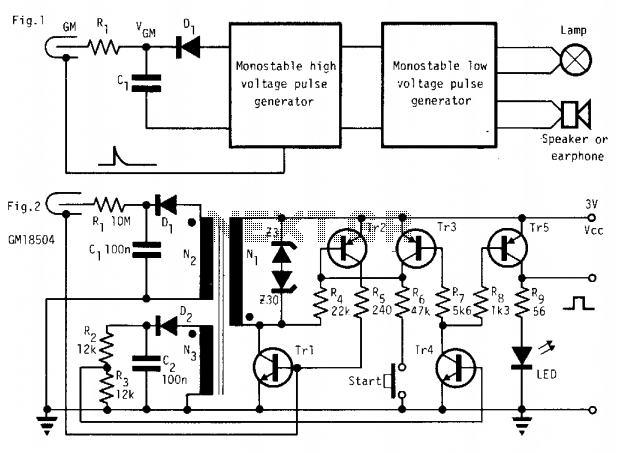
The MicroPower SE
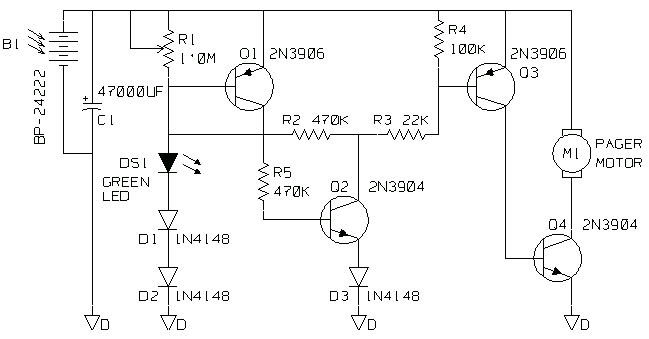
A micro power solar engine has been a goal since my introduction to BEAM Robotics. I believe that if there wasn't one before, there is one now. What I'm presenting to you looks very similar to one of the circuits found in Steven Bolt's web pages. As you will see, I made only minor changes to that design and not without help. My contributions have been to recognize the potential of the circuit, breadboard and test it. More: The bottom line is that if you have a power source which will provide 2.5Vdc at 10uA this circuit should drive a pager motor. It turns on the motor at 2.3 to 2.5Vdc and switches off at 1.2 to 1.5Vdc.
The micro power solar engine circuit is designed to operate efficiently with minimal energy input, making it ideal for applications in BEAM robotics and similar low-power projects. The circuit typically consists of a small solar panel capable of generating sufficient voltage (around 2.5V) and current (approximately 10µA) to power a small motor, such as a pager motor.
Key components of the circuit include a solar cell, a storage capacitor for energy buffering, a motor driver, and a feedback mechanism to control the motor's operation. The solar cell harnesses sunlight and converts it into electrical energy, which is then stored in a capacitor. This capacitor acts as a reservoir of energy, ensuring that the motor can receive power even during brief periods of low sunlight.
The motor driver circuit is crucial for controlling the operation of the pager motor. It typically involves a transistor or a MOSFET that acts as a switch, allowing the motor to be turned on when the voltage reaches approximately 2.3V to 2.5V. Once the voltage drops to around 1.2V to 1.5V, the feedback mechanism deactivates the motor, preventing it from running when insufficient power is available. This on/off switching behavior is essential for maximizing the efficiency of the solar engine and prolonging the operational life of the system.
In summary, this micro power solar engine circuit exemplifies an effective approach to harnessing solar energy for small-scale robotic applications, demonstrating the potential for low-power devices to operate autonomously using renewable energy sources.A `micro power solar engine` has been a goal since my introduction to BEAM Robotics. I believe that if there wasn`t one before, I there is one now. What I`m presenting to you looks very similar to one of the circuits found in Steven Bolt`s web pages. As you will see, I made only minor changes to that design and not without help. My contributions have been to recognize the potential of the circuit , bread board and test it. The bottom line is that if you have a power source which will provide 2.5Vdc at 10uA this circuit should drive a pager motor. It turns on the motor at 2.3 to 2.5Vdc and switches off at 1.2 to 1.5Vdc. 🔗 External reference
The micro power solar engine circuit is designed to operate efficiently with minimal energy input, making it ideal for applications in BEAM robotics and similar low-power projects. The circuit typically consists of a small solar panel capable of generating sufficient voltage (around 2.5V) and current (approximately 10µA) to power a small motor, such as a pager motor.
Key components of the circuit include a solar cell, a storage capacitor for energy buffering, a motor driver, and a feedback mechanism to control the motor's operation. The solar cell harnesses sunlight and converts it into electrical energy, which is then stored in a capacitor. This capacitor acts as a reservoir of energy, ensuring that the motor can receive power even during brief periods of low sunlight.
The motor driver circuit is crucial for controlling the operation of the pager motor. It typically involves a transistor or a MOSFET that acts as a switch, allowing the motor to be turned on when the voltage reaches approximately 2.3V to 2.5V. Once the voltage drops to around 1.2V to 1.5V, the feedback mechanism deactivates the motor, preventing it from running when insufficient power is available. This on/off switching behavior is essential for maximizing the efficiency of the solar engine and prolonging the operational life of the system.
In summary, this micro power solar engine circuit exemplifies an effective approach to harnessing solar energy for small-scale robotic applications, demonstrating the potential for low-power devices to operate autonomously using renewable energy sources.A `micro power solar engine` has been a goal since my introduction to BEAM Robotics. I believe that if there wasn`t one before, I there is one now. What I`m presenting to you looks very similar to one of the circuits found in Steven Bolt`s web pages. As you will see, I made only minor changes to that design and not without help. My contributions have been to recognize the potential of the circuit , bread board and test it. The bottom line is that if you have a power source which will provide 2.5Vdc at 10uA this circuit should drive a pager motor. It turns on the motor at 2.3 to 2.5Vdc and switches off at 1.2 to 1.5Vdc. 🔗 External reference
